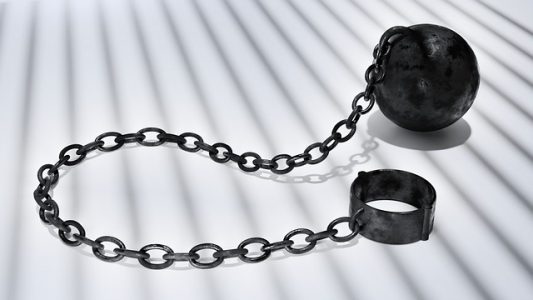
In the early 2000’s, while completing my studies in Kollel, I found myself searching for a contemporary 21st century approach to deal with the Torah’s concept of slavery. This is a real challenge for many — as we have grown up in a time and place where few things are more abhorrent than slavery. After much research and communicating with many different Talmidei Chachamim, here are five ideas I found to be helpful (as reflected in the source sheets that I prepared):
1) Unfortunately, some erroneously try to explain away the challenge of Eved Cana’ani (where one person truly owns another) with what the Torah, Chazal, and Meforshim write about Eved Ivri (i.e. a form of indentured servitude). This must be avoided.
2) The first rabbi I could find who even seemed to be bothered by slavery was Rav Shamshon Rafael Hirsch (I also found a slight concern articulated by the Malbim as well). Why is it that until the latter part of the 19th century none of our Meforshim seem to have been bothered by this? It seems that until just about 150 years ago, slavery was understood as an ugly necessary component of how the world operated. That’s not to say everyone loved the concept, but the institution of slavery seemingly only became absolutely abhorrent to humanity when economic conditions and modern innovations allowed for other ways for the world to function.
3) Yes, slavery as we know of it, and the ways in which it was practiced by mankind throughout history has absolutely repulsive elements to it. However, it is crucial to recognize that is not what the Torah had in mind with Eved Cana’ani. See Rambam Hilchos Avadim 9:8 for a serious lesson on how mercifully an owner is expected to treat his Eved Cana’ani. (For more clear distinctions between slavery as we think of it, and the institution of Eved Cana’ani, see Rambam Hilchos Avadim 5 from paragraph 4 to the end where it’s codified that if an owner causes serious injury to his slave, the slave goes free. See Rambam Hilchos Avadim 8:9 about an Eved in Chutz La’Aretz who wants to move to Israel — we compel the owner to make Aliya with him, or sell him to another Jewish owner moving to Israel. See Rambam Hilchos Avadim 8:10 about an Eved in Chutz La’Aretz who runs away to Israel — he is set free. Finally, see Shemos 21:20-21 where an owner who murders his Eved Cana’ani is subject to the death penalty.)
4) It is crucial to remember that in order to become a full-blown Eved Cana’ani, the Eved’s consent for Milah and observing much of the 613 Mitzvos is required — or else he cannot become part of a Jewish home. As such, a strong element of consent is at the base of the institution of Eved Cana’ani. This is radically different from traditional slavery. See Sefer HaChinuch 347 in the accompanying source sheet for this — as well as Rambam Hilchos Avadim 8:12.
5) In a world before safety regulations, minimum wages, benefits, government social services, etc. a compelling argument can be made that some workers would be treated far better as Avadim according to the Torah’s system of Eved Cana’ani than what they experienced. See the eye-opening essay of Rav Kook in the attached source sheet. This approach became real to my wife and me when we toured Pioneer Tunnel when we lived in Pennsylvania. We learned of the horrible working conditions of the coal miners, how their employers treated them terribly, and how those who died in the mines were quickly replaced by the next wave of immigrants in need of work. Our guide told us how his grandfather began working in the mines as a young boy, and thanked G-d for WWII for getting him out of the mines to fight the Nazis. He told his grandson, “WWII saved my life.” Quite an astonishing remark by someone who went on to slug it out with the Nazis during the darkest days of the Battle of the Bulge. Nonetheless, he saw that as safer than a life of working in the 20th century Pennsylvania coal mines.
Please download the source sheets here.
Rabbi Akiva Males serves as the Rav of the Young Israel of Memphis Tennessee. Rabbi Males grew up in Cleveland, OH, and received his Jewish education at the Hebrew Academy of Cleveland, the Wisconsin Institute for Torah Study (W.I.T.S.), and Yeshiva Chofetz Chaim (Rabbinical Seminary of America) based in Queens, NY — where he received his semicha.



















